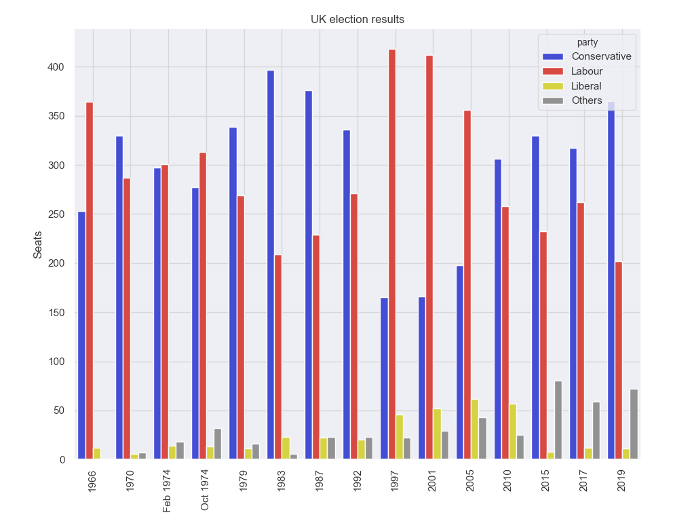DataCamp has created a Seaborn cheat sheet for those who are ready to get started with this data visualization library with the help of a handy one-page reference. You’ll see that this cheat sheet presents you with the five basic steps that you can go through to make beautiful statistical graphs in Python. Seaborn in fact has six variations of matplotlib’s palette, called deep, muted, pastel, bright, dark, and colorblind. These span a range of average luminance and saturation values: Many people find the moderated hues of the default 'deep' palette to be aesthetically pleasing, but they are also less distinct. As a result, they may be more.
Python For Data Science Cheat Sheet Seaborn Learn Data Science Interactively at www.DataCamp.com Statistical Data Visualization With Seaborn DataCamp Learn Python for Data Science Interactively Figure Aesthetics Data The Python visualization library Seaborn is based on matplotlib and provides a high-level interface for drawing. Seaborn Python Cheat Sheet Το Seaborn cheat sheet με δείγματα κώδικα σας καθοδηγεί στη βιβλιοθήκη οπτικοποίησης δεδομένων που βασίζεται στο Matplotlib. To analyse a set of data using Python, we make use of Matplotlib, a widely implemented 2D plotting library. Likewise, Seaborn is a visualization library in Python. It is built on top of Matplotlib. Seaborn Vs Matplotlib It is summarized that if Matplotlib “tries to make easy things easy and hard things.

Karlijn Willems
You most probably will know by now that data storytelling, accomplished by data visualization, amongst other things, is an essential skill for every data scientist: after you have turned the raw data into understanding, insights and knowledge, you also need to communicate these findings effectively to your audience.
For most beginners, the first Python data visualization library that they use is, naturally, Matplotlib. It is a Python 2D plotting library that enables users to make publication-quality figures. It is quite an extensive library where a cheat sheet will definitely come in handy when you’re learning, but when you manage to use this library effectively, you’ll also be able to get insights and work better with other packages, such as Pandas, that intend to build more plotting integration with Matplotlib as time goes on.
Another package that you’ll be able to tackle is Seaborn, the statistical data visualization library of Python.
DataCamp has created a Seaborn cheat sheet for those who are ready to get started with this data visualization library with the help of a handy one-page reference.
Seaborn Python Cheat Sheet For Beginners

You’ll see that this cheat sheet presents you with the five basic steps that you can go through to make beautiful statistical graphs in Python.
Karlijn Willems
You most probably will know by now that data storytelling, accomplished by data visualization, amongst other things, is an essential skill for every data scientist: after you have turned the raw data into understanding, insights and knowledge, you also need to communicate these findings effectively to your audience.

For most beginners, the first Python data visualization library that they use is, naturally, Matplotlib. It is a Python 2D plotting library that enables users to make publication-quality figures. It is quite an extensive library where a cheat sheet will definitely come in handy when you’re learning, but when you manage to use this library effectively, you’ll also be able to get insights and work better with other packages, such as Pandas, that intend to build more plotting integration with Matplotlib as time goes on.

Another package that you’ll be able to tackle is Seaborn, the statistical data visualization library of Python.

Seaborn Python Cheat Sheet
DataCamp has created a Seaborn cheat sheet for those who are ready to get started with this data visualization library with the help of a handy one-page reference.
Python 3 Commands Cheat Sheet
You’ll see that this cheat sheet presents you with the five basic steps that you can go through to make beautiful statistical graphs in Python.
